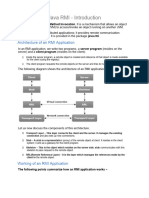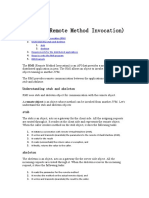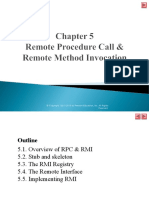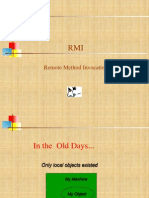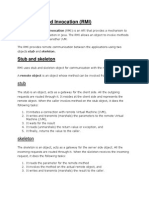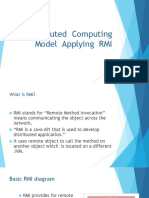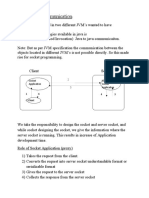0% found this document useful (0 votes)
27 views39 pagesJava RMI Programming Guide
This document discusses remote invocation and remote method invocation (RMI) architecture. It provides an overview of RMI programming, including server-side and client-side programming. It describes the RMI architecture with components like proxies, stubs, skeletons, and dispatchers. It also covers advanced RMI concepts like security policies, exceptions, and dynamic loading. Finally, it mentions using RMI to implement a more complex application like a math server.
Uploaded by
zelalemCopyright
© © All Rights Reserved
We take content rights seriously. If you suspect this is your content, claim it here.
Available Formats
Download as PPT, PDF, TXT or read online on Scribd
0% found this document useful (0 votes)
27 views39 pagesJava RMI Programming Guide
This document discusses remote invocation and remote method invocation (RMI) architecture. It provides an overview of RMI programming, including server-side and client-side programming. It describes the RMI architecture with components like proxies, stubs, skeletons, and dispatchers. It also covers advanced RMI concepts like security policies, exceptions, and dynamic loading. Finally, it mentions using RMI to implement a more complex application like a math server.
Uploaded by
zelalemCopyright
© © All Rights Reserved
We take content rights seriously. If you suspect this is your content, claim it here.
Available Formats
Download as PPT, PDF, TXT or read online on Scribd
/ 39














